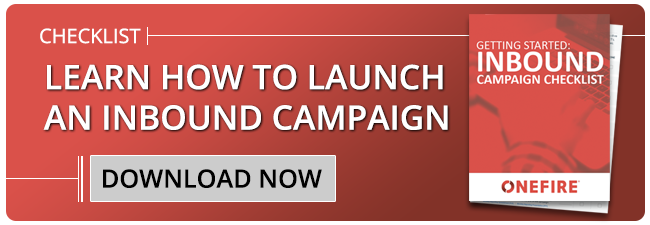Creating original content can be an incredible strategy for any business that is looking to generate more leads and gain new customers.
But, when starting out, there are several blogging lessons that too many businesses learn the hard way. While 'create a blog' seems simple enough, there's more to it than meets the eye and that's why the blogging lessons below are often missed along the way. Make sure that your business isn't ignoring these lessons:
1. Publish Consistently
Inconsistency is the number one killer of otherwise good blogs. If you decide to create a blog for your company (you should), it's important to set a schedule and stick to it. Readers of your blog will expect fresh content. If you're unable to blog frequently and consistently (or aren't confident you'll be able to commit), reach out for help. Without consistency, your blog becomes more of a sporadic stream-of-consciousness than a strategy. With a consistent schedule, you can plan in advance what you want to write about, which audience you want to target, and what you want to accomplish with each piece of content. That will give you better return on your invested time than publishing on a whim, once in a while.
SEE ALSO: Sign up for our Inbound Marketing webinar and learn more about content marketing
2. Promote Your Content
You (or a capable ghostwriter) has written a great piece of content on behalf of your company! It educates consumers, establishes you as an industry authority, and endears you to potential customers. Those are all good things. People should read it. Too often, they don't get the chance - because no one promoted it. Social media is a powerful, free tool to blast your content out to interested parties. Don't let that opportunity slip by and miss out on traffic that's sitting there waiting. As an added bonus, sharing great original content on social media further establishes your brand as relevant, engaging, and accessible.
3. Don't Forget SEO
For your content to reach your intended audience, it has to show up when they're searching for it. What do most people do before making a major purchase (and even most smaller purchases)? Research. Most of that research happens on Google (or another search engine). When they search for questions about the product or service you offer, your content needs to be there. In fact, it needs to be on the first page and preferably high in the results. You can help your content rank that way using SEO (search engine optimization). Following best practices and incorporating search terms (long-tail keywords), you can increase the chances that your content will be found where it needs to be.
4. Write For Them
It's happened to too many business owners (or marketing execs, etc). They get excited, start a blog, and end up inadvertently writing for the wrong audience: themselves. It's understandable - people are proud of the businesses they help build and want to talk about their products, services, history, and more. But, does the potential customer want that? Not likely. The potential customer is looking for content that talks to them, answers their questions, and solves their problems. While a blog that celebrates how great your business is might look and sound good to you at first, give it another read and ask: will my potential customer feel the same way?
5. Invite Action
For a business, starting a blog has a clear end game: improve the bottom line. That starts with capturing leads. When building your blog, make sure that you're inviting action. HubSpot calls them 'Calls to Action,' buttons that ask the reader to take action and further the conversation with the company, that the content started. Without some type of invitation to converse further, a blog can be more of a dead end. It might be great content, but it doesn't do much for business growth if readers don't have the chance to become customers. Anyone reading the content you've created is demonstrating at least some interest in your industry, products, or services. Make taking the next step as easy on them as possible.
Keep these lessons in mind and you'll avoid many of the pitfalls that sink (or at least delay) promising content strategies.





